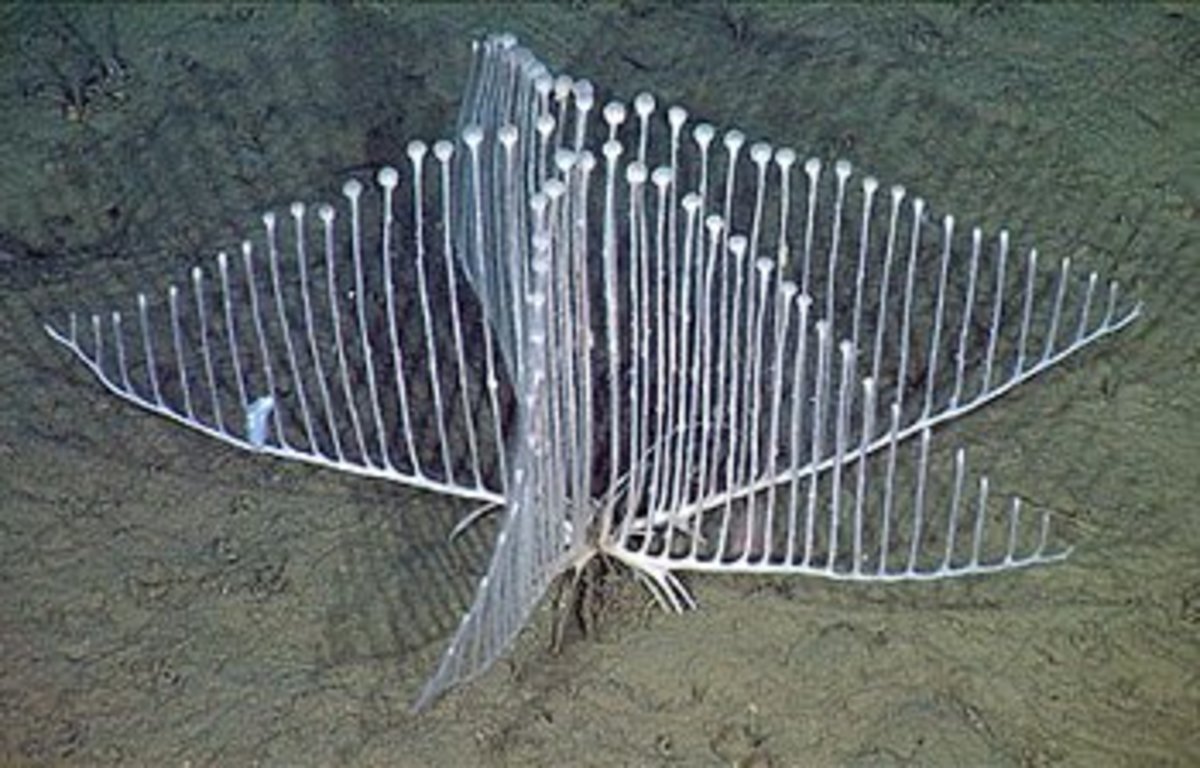

One thing the team already has planned is to match up DNA from the specimens with DNA snippets sifted from seawater, known as environmental or eDNA, which is shed by organisms in slime and skin cells. “I’m really excited about what new future science discoveries come out from this in the years to come,” says Taylor. It will take years for experts to work their way through all the specimens the expedition collected, but O’Hara estimates that between 10% and 30% will be species new to science. “You see it in the water, you see it on top of the water, and we saw it in our collections.” “Even when you’re that far off the continent, at four kilometres deep, you’ll dredge up plastics,” he says. The main threat, according the team, was plastic pollution. The area isn’t threatened by deep-sea mining because, as O’Hara says, geologists prospected for seafloor minerals and decided they weren’t worth exploiting. Researchers also found ancient rocks and fossils, such as a tooth from a white shark, right. This story was originally published on November 28 at 2:45 pm ET and updated on November 29 at noon ET with more information on why this may turn out to be the deepest fish ever found.A flatfish from the order Pleuronectiformes, left. They are almost certainly byproducts from degrading pieces of plastic. Scientists recently discovered staggeringly high amounts of persistent organic pollutants (POPs) in crustaceans taken from the deepest part of the trench. Even these poorly understood trenches are not immune from our influence. "We don't know how closely tied they are to the environment above.Įven so, it's not as if we haven't left our mark. "There are trenches all around the Ring of Fire in the Pacific, but we don't know how similar they are or how connected they all are," Gerringer says. There's just too much about the deep ocean that we simply don't yet know. When it comes to understanding life in the deep, "we're still at the 'discovering-who-is-down-there phase,'" Gerringer says. "Not that we haven't looked," Gerringer says. Scientists have taken to calling it the " ethereal snailfish." It has a body so delicate a scientist once compared it to "tissue paper being dragged through water." It remains an as-yet undescribed species with no formal name. That one makes an appearance in the BBC's new Blue Planet 2. Kaohsiung, Taiwan Photograph by Boris S., National Geographic Your Shotīut they still haven't caught a single individual of the other fish, which was filmed at about the same depth. Inside their bellies Gerringer found hundreds of tiny crustaceans shaped like the roly-poly pill bugs one might find in a garden.īlack-browed Barbet. Their eggs are unusually large-almost a centimeter wide-and based on dissections of the individuals scientists hauled up, these snailfish don't lack for food. The species is almost certainly endemic to the trench, and appears to be abundant-scientists saw several on cameras carried by deep-diving autonomous vehicles in 2014. "It takes a lot of people to keep a ship running and we wanted to sincerely thank them." "We named this fish after him in acknowledgment of the crews that serve on oceanographic research vessels," Gerringer says. Challenger officer Herbert Swire, a navigational sub-lieutenant, published journals from the journey. The new species, Pseudoliparis swirei, is named for an officer on the HMS Challenger, the 1870s British expedition that discovered thousands of new ocean species and led to the initial discovery of the trench. Of course, scientists concede they could some day be proven wrong.

"They have evolved adaptations to that pressure to keep their enzymes functioning and membranes moving." Snailfish are thought to be able to handle pressures equal to the weight of 1,600 elephants.

"There are real limitations to life in these trenches," says Mackenzie Gerringer, a postdoctoral fellow at the University of Washington's Friday Harbor Laboratories. No fish ever came up from a tow to the bottom 2,500 feet of water. The two most significant major deepwater trawling efforts-one by Danish researchers, the other in the 1950s by the Soviets-dropped nets 134 times to depths greater than 6,000 meters. As of 2014, baited camera traps had been sent to the deepest regions 14 times across five Pacific Ocean trenches without ever even spotting a fish. While a host of animals can thrive down deep-foraminifera, odd decapod shrimp, sea cucumbers, microbes-no fish has ever been caught from the bottom quarter of the ocean.


 0 kommentar(er)
0 kommentar(er)
